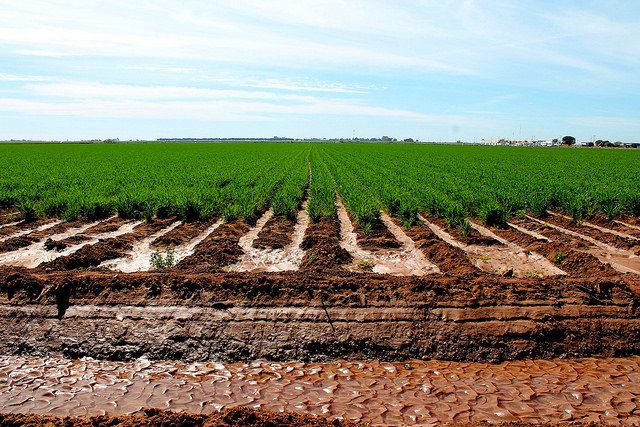
At the International Maize and Wheat Improvement Center (CIMMYT) we care deeply about one of the Earth’s most precious resources: soils. Humanity relies on soils not only for food production, but also for a range of vital ecosystem services. Soil is the vital substrate for terrestrial ecosystems, whether natural or agricultural.
Increasing population and related food demand are putting tremendous pressure on soils and too often lead to unsustainable practices jeopardizing their long term productivity. When increasing food demand is met by clearing new lands, it often occurs on more fragile soils, and/or at the expense of natural habitats. This short-term solution puts future livelihoods at risk and cannot continue.
For several decades, conservation agriculture (CA) has been a main research topic for CIMMYT’s agronomists. CA, as we define it, is based on three principles: 1) reduced or no tillage; 2) permanent soil cover; 3) crop rotation. Empirical evidence demonstrates the large benefits of CA on soil conservation/reclamation and soil health.
Work has been carried out and knowledge generated in very diverse agro-ecologies and socio-economic environments in the regions where CIMMYT works (Latin America, Southeast Asia, East and Southern Africa). Since many people use the term CA in a less scientific way, I sometimes call it innovation agriculture. I have seen many fields worldwide where our scientists work alongside farmers on sustainable intensification with a focus on these elements.
Agronomic “proof of concepts” is not sufficient, and we cannot just rely on results obtained at the field level to expect adoption at scale. Placing technical innovations, such as CA, into a farming systems context is needed to understand its adoptability and potential contribution to soil conservation, productivity, and climate change adaptation. One major adoption constraint of CA for many smallholder farmers is keeping a permanent crop cover with crop residues (zero tillage without proper soil cover can do more harm than good with regard to soil erosion).
Crop residues are often used to feed livestock, but these materials left in the field after a crop has been harvested are also essential to maintaining rich and fertile soil. Feeding the soil versus feeding animals is often a difficult choice farmers have to make. Through farming system research and participatory approaches, CIMMYT and its partners are working with farmers to develop technological and management options that provide higher profitability, improved resource use efficiency, while maintaining or improving their production base; soils.
The 2016 U.N. World Soil Day theme on Dec. 5, is “Soils and pulses, a symbiosis for life,” which resonates very well with our work: CIMMYT conducts research in maize and wheat based systems and is a strong proponent of diversification through the improved use of legumes in rotation or intercropping.
Soils draw a great deal of interest on the climate change mitigation front. They are a huge carbon reservoir with the potential to store even more under better land management and land use practices, as shown by the recent 4 per thousand initiative launched during the COP21 2015 U.N. climate talks in Paris. However, those mitigation options need to be better quantified to assess sequestration potential and not oversell options and technologies. CIMMYT scientists have recently contributed to several studies on that topic, helping to shed the light on greenhouse gas sequestration potential from technical innovations such as CA and reduced tillage.
Increased productivity through improved varieties of maize and wheat with better management practices is not only soil friendly but also provides land sparing opportunities; reducing the pressure on clearing new land preserving natural ecosystems.
 Capacity development
Capacity development 
